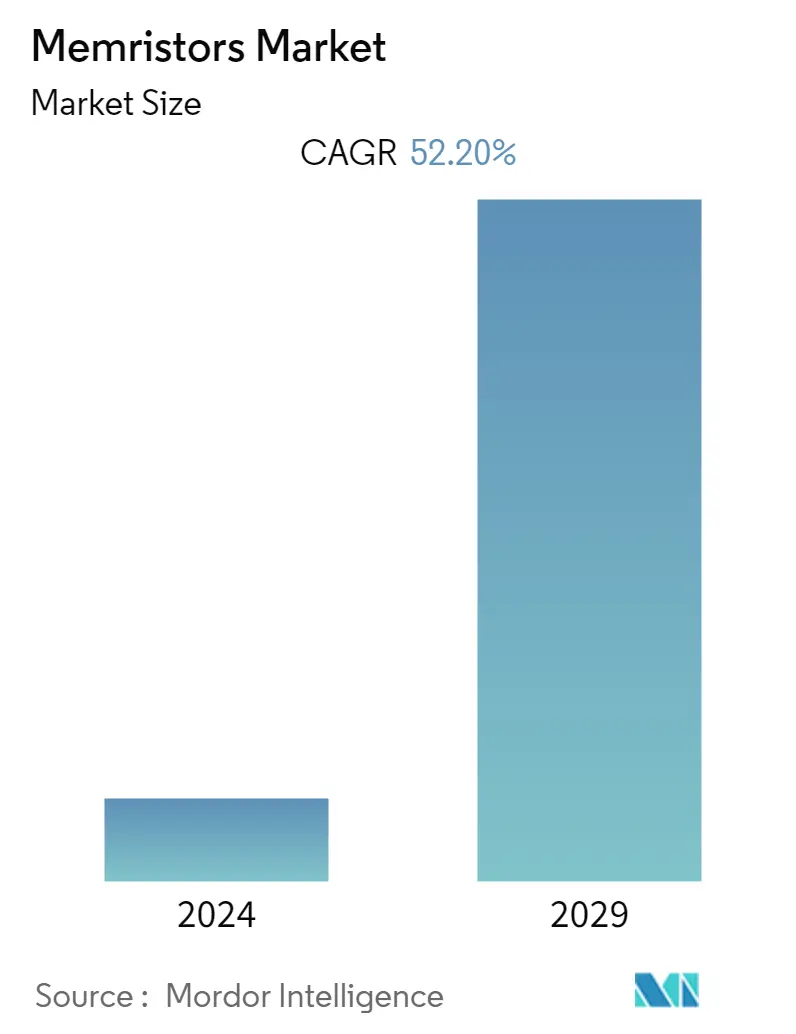Market Size of Memristors Industry

| Study Period | 2019 - 2029 |
| Base Year For Estimation | 2023 |
| CAGR | 52.20 % |
| Fastest Growing Market | Asia Pacific |
| Largest Market | North America |
| Market Concentration | Medium |
Major Players.webp)
*Disclaimer: Major Players sorted in no particular order |
Need a report that reflects how COVID-19 has impacted this market and its growth?
Memristors Market Analysis
The memristors market is expected to register a CAGR of about 52.2% during the forecast period. However, the commercialization of the memristors market is currently in its initial stages. The market is expected to witness remarkable growth as memristors have several critical advantages over other passive electronic devices, including small size, high retention capacity, fast read and write times, and 3D design capabilities.
- Memristor technology has seen a series of developments over the last 50 years. During this period, companies like Intel, Panasonic, and Micron, among others, have continued to innovate in this field. Given the promising features to improve power saving, performance, bandwidth requirement, and space-saving augmented with data transfer rate, memristors are expected to become a mainstream product by the end of the forecast period.
- Memristor-based memories are considered the more extensive prospect to replace CMOS in the storage class memory, as they are capable of delivering outstanding performance, such as low power consumption, fast write speed, great scalability, three-dimensional integration, low cost, and compatibility with the CMOS fabrication process. Furthermore, because many materials are showing memristive effects, broadly classified as 2D materials, metal oxides, emerging materials, and organics, commercialization of this technology can open several new use cases, driving the growth of the studied market.
- Technology commercialization is possible, mainly in areas like ReRAM, hybrid circuits, synapses, neuromorphic architectures, deep learning, and reconfigurable logic. Resistive RAM, or ReRAM, has been the most developed among all the memristor-based technologies. ReRAM has had many papers published and several patents granted over the years.
- However, the technology is new and poses many challenges like state retention capacity concerning time, finding new material which fits into memristive framework, applications in analog and digital domains, response to reading/write stimulus, and compatibility issues in terms of power requirement, among others.
- Although the outbreak of COVID-19 had a minimal impact on the memristors market, the fact that the pandemic has significantly increased consumers' awareness about digital and advanced technologies is expected to have a long-term effect on the growth of the studied market as memristor presents itself as promising next-generation technology, which is expected to have a high impact on the future trends of the electronics and related industries.
